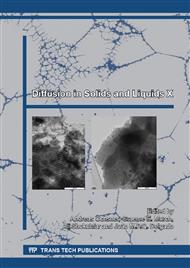p.71
p.77
p.82
p.88
p.100
p.106
p.112
p.116
p.122
Analysis of Pollutant Emissions of Diesel Engine Operating with Mixture of Diesel, Biodiesel and Natural Gas
Abstract:
The aim of this research is to study the pollutant emissions of the commercial diesel engine, operating with B5 (commercial diesel), B70, B80, B90 and natural gas. The fuel used in the engine consists of a mixture of 15% diesel and biodiesel (liquid fuel) and 85% natural gas. Experiments were made using 40, 60 and 80 kW load. The engine was instrumented to obtain the temperature, air, gas and diesel (plus biodiesel) flow rates, the air pressure at the entrance of the engine, the lubricant oil temperature, and the concentration of exhaust gases during each experimental test. It was verified that the emission of NOx, NO and CO2 had decreased while the emissions of CO and SO2 had increased, when compared to the conditions using standard diesel (B5) alone.
Info:
Periodical:
Pages:
100-105
Citation:
Online since:
July 2015
Price:
Сopyright:
© 2015 Trans Tech Publications Ltd. All Rights Reserved
Share:
Citation:


